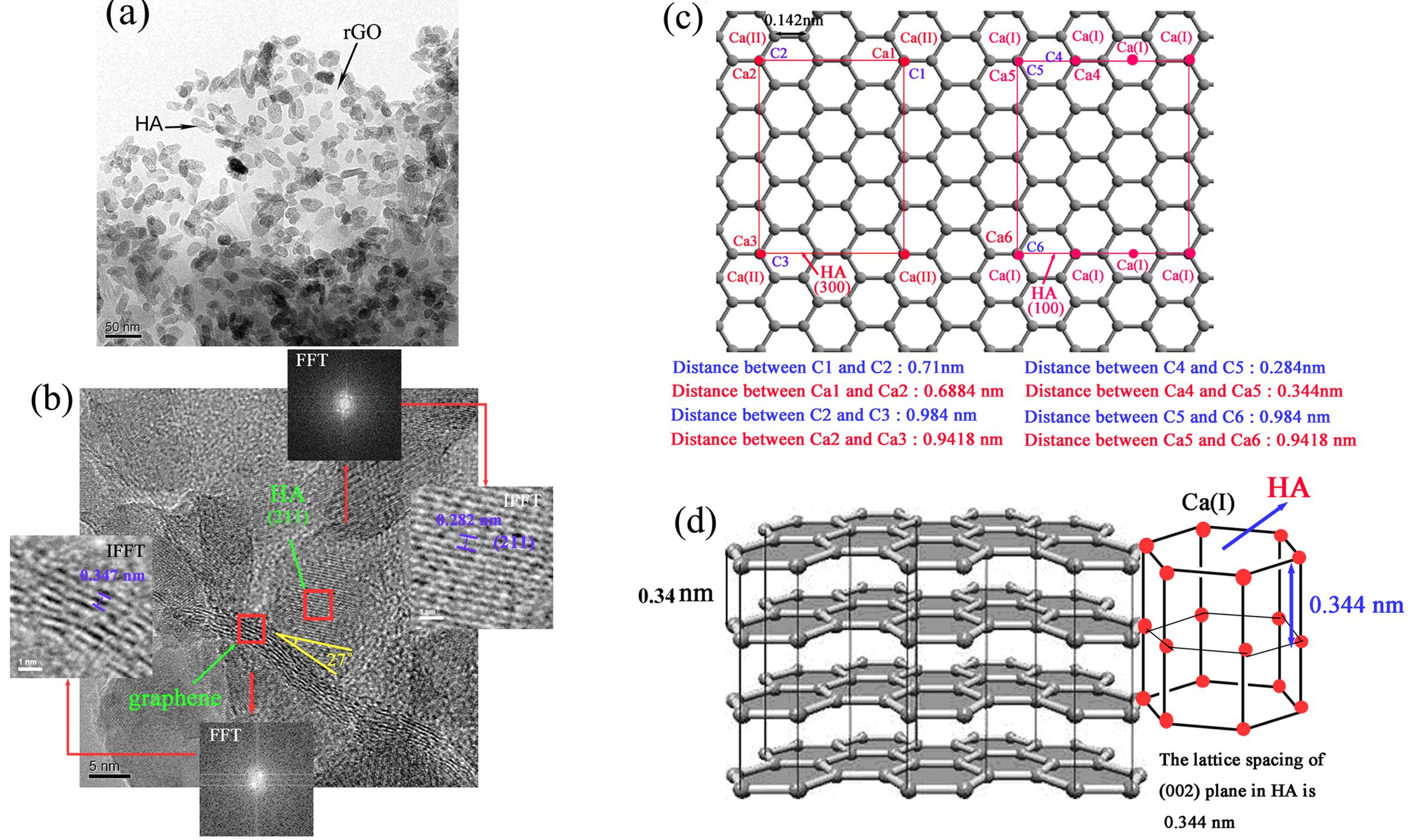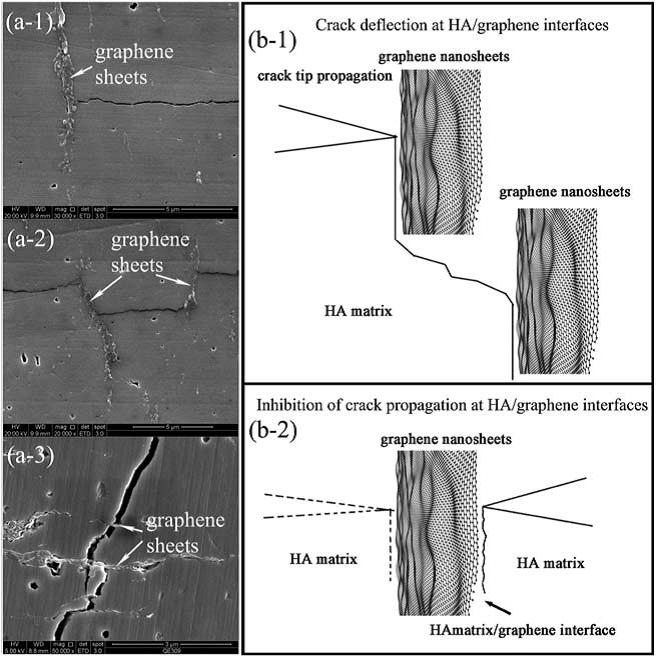The bioceramic, hydroxyapatite (HA), has been successfully used in orthopedic surgery for promoting fast fixation of bony tissues due to its similarity in chemistry to human skeletal bone. Allowing direct apposition of host bony tissue, good osteoconductive and osteoinductive capabilities offer HA a great advantage in clinical applications. However, the intrinsic brittleness and low fracture toughness of bulk HA are yet major hurdles that impede its long-term functional service after clinical surgery under load-bearing conditions. Developing novel HA-based biomaterials with excellent biological and mechanical performances has therefore been one of the most exciting research goals for biomaterials community.
Recently, Prof. Hua Li’s group from the Ningbo Institute of Materials Technology and Engineering (NIMTE), Chinese Academy of Sciences (CAS) developed novel HA-graphene nanocomposites and solved the longstanding toughening problem for bioceramics. The research appears in the issue 13, 2013 of the Journal of Materials Chemistry B (J. Mater. Chem. B 2013, 1, 1826-1834) .
Hua Li’s team managed to synthesize HA-graphene nanosheets nanocomposites by a wet-chemical approach followed by spark plasma sintering consolidation. HA nanorods nucleate on and grow along graphene sheets with preferred orientation (Fig. 1). The (300) plane of HA forms a naturally strong and coherent interfacial bond with the surface of the graphene wall and the cross-section of graphene builds with the (002) plane of HA crystals a stronger interface due to the smaller lattice mismatch. These structural features give rise to enhanced mechanical properties of the composites. Fracture toughness of the spark plasma sintered nanocomposites reaches 3.94 MPa×m1/2, showing a striking 203% increase compared to pure HA, and is remarkably higher than other HA-based composites toughened by carbon nanotubes, zirconia or Ti.
 |
|
Fig. 1 Hydroxyapatite nano rods nucleate on and grow along graphene sheets with preferred orientation, forming naturally strong and coherent interfacial bond. |
The toughening associated with even distribution of graphene nanosheets in the composites pertains to fine grain strengthening, graphene flakes pullout, crack deflection and crack bridging (Fig. 2). Investigation in sub-micron scale of the toughening mechanisms solved the longstanding bioceramic toughening problem, which affects the extensive efforts of searching for suitable second phase reinforcements without sacrificing the biological properties of HA matrix.The researchers have also examined the in vitro biological performances of the nanocomposites and discovered that graphene promotes osteoblast cell attachment, adhesion and proliferation. The enhanced mechanical properties together with the improved behavior of the human osteoblast cells suggest a great potential of the composites for biomedical applications.
 |
|
Fig. 2 Effective inhibition of crack propagation by graphene nanosheets in the novel HA-graphene nanosheets composites. |
It seemed clear that surface modification, for example nanostructuring, addition of graphene in this research, etc, benefits biocompatibility of the biomaterials. The mechanism however keeps problematic. The researchers say that their further ongoing research is devoted to better understanding the interfaces between the synthetic materials and cells. Through their study in molecular level of how the absorbed proteins function, they expect to create a deeper understanding of cell-biomaterial interactions and, hence, improve their ability to predict and control the biocompatibility of new materials.
Professor Hua Li lihua@nimte.ac.cn
Research Group Url: http://english.nimte.cas.cn/rh/rd/ssfc
All Images by ![]()

